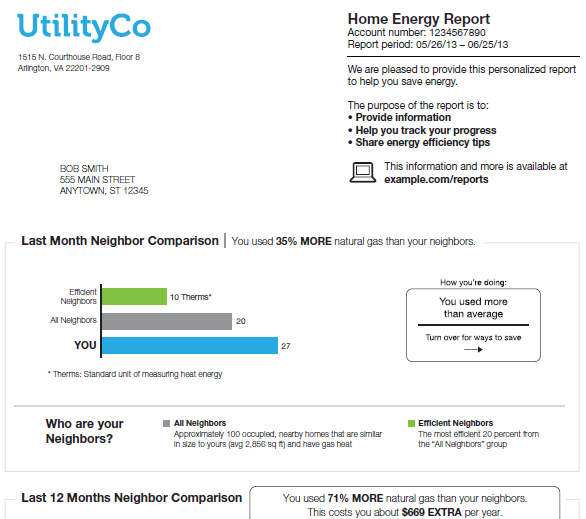Chapter 12. Measuring Impact
Opower, an energy-efficiency company based in Arlington, Virginia, runs some of the largest experiments in the world about how products can change behavior. Millions of people have participated in their studies—simply by opening a letter from their utility company or fiddling with their thermostat.
Opower is best known for delivering monthly reports to utility customers, showing them how their energy usage stacks up against their (anonymous) neighbors. It’s a well-studied technique in social psychology called peer comparisons, which we discussed a bit in Chapter 10. Figure 12-1 shows an example of one of its comparisons.

Figure 12-1. Opower energy report, comparing the reader’s home heating usage to that of his neighbors
A host of government, private, and academic publications have shown that Opower’s simple comparisons help consumers cut their energy bills by roughly 2% on average ([ref4]). That may seem small, but it adds up to over 2.6 terawatt-hours of electricity—enough to power 300,000 homes for a year, or roughly $300 million in consumer savings on energy bills ([ref145]).
Opower constantly runs experiments to measure their impact and tests ways to improve it further. Rigorous measurement and testing has been a key factor in their success.
This chapter and the next two provide the tools you need to measure your product’s current impact and improve that ...
Get Designing for Behavior Change now with the O’Reilly learning platform.
O’Reilly members experience books, live events, courses curated by job role, and more from O’Reilly and nearly 200 top publishers.

